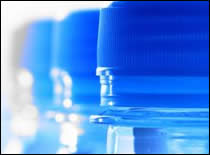Key Facts About Protecting Yourself After a Volcanic Eruption
You can do many things to protect yourself and your family after a volcanic eruption:
- Pay attention to warnings, and obey instructions from local authorities. For example, stay indoors until local health officials tell you it is safe to go outside.
- Listen to local news updates for information about air quality, drinking water, and roads.
- Turn off all heating and air conditioning units and fans, and close windows, doors, and fireplace and woodstove dampers to help keep ash and gases from getting into your house.
Exposure to ash can harm your health, particularly the respiratory (breathing) tract. To protect yourself while you are outdoors or while you are cleaning up ash that has gotten indoors, a disposable particulate respirator (also known as an “air purifying respirator”) may be considered. An N-95 respirator is the most common type of disposable particulate respirator and can be purchased at businesses such as hardware stores. It is important to follow directions for proper use of this respirator. For more information, see NIOSH-Approved Disposable Particulate Respirators (Filtering Facepieces) . If you don’t have a disposable particulate respirator, you can protect yourself by using a nuisance dust mask as a last resort, but you should stay outdoors for only short periods while dust is falling. Nuisance dust masks can provide comfort and relief from exposure to relatively non-hazardous contaminants such as pollen, but they do not offer as much protection as a particulate respirator. Note that disposable particulate respirators do not filter toxic gases and vapors.
- Stay away from ashfall areas, if possible. Avoid contact with ash as much as you can. Keep your skin covered to avoid irritation from contact with ash.
- Wear goggles to protect your eyes from ash.
 Do not travel unless you have to. Driving in ash is hazardous to your health and your car. Driving will stir up more ash that can clog engines and stall vehicles.
Do not travel unless you have to. Driving in ash is hazardous to your health and your car. Driving will stir up more ash that can clog engines and stall vehicles.- Replace disposable furnace filters or clean permanent furnace filters frequently.
- If your drinking water has ash in it, use another source of drinking water, such as purchased bottled water, until your water can be tested.
- Clear roofs of ash. Ash is very heavy and can cause buildings to collapse. Be very cautious when working on a roof. Ash can be slippery and make it easy to fall. Information about injuries and mass trauma events can be found in Injuries and Mass Trauma Events: Information for the Public.
Volcanic eruptions may result in floods, landslides and mudslides, power outages, and wildfires. For information on protecting yourself against these hazards, visit the following:
- Earthquakes
Includes information on preparing for, surviving, and recovering from an earthquake. - Floods
Includes information on making sure food and water are safe, cleaning up, and emergency supplies. - Landslides and Mudslides
Includes information on protective measures to take before, during, and after a landslide or debris flow. - Power outages
Includes information on carbon monoxide poisoning, alternative heat and energy sources, downed power lines, and food and water safety. - Wildfires
Includes information on smoke inhalation and other wildfire hazards.
Sources
For more information on volcanoes and health, see the following sources:
- American Red Cross
- Federal Emergency Management Agency
- U.S. Geological Survey
- Washington State Department of Health
Contact Us:
- Centers for Disease Control and Prevention
1600 Clifton Rd
Atlanta, GA 30333 - 800-CDC-INFO
(800-232-4636)
TTY: (888) 232-6348 - Contact CDC-INFO




